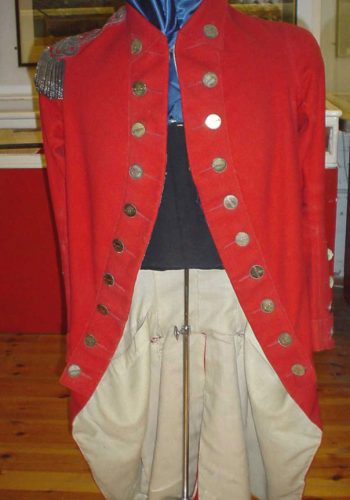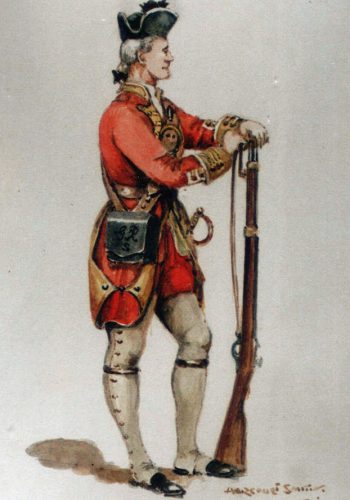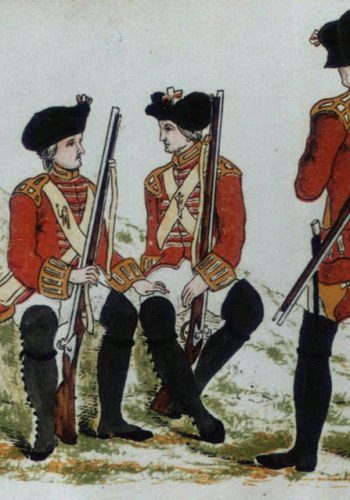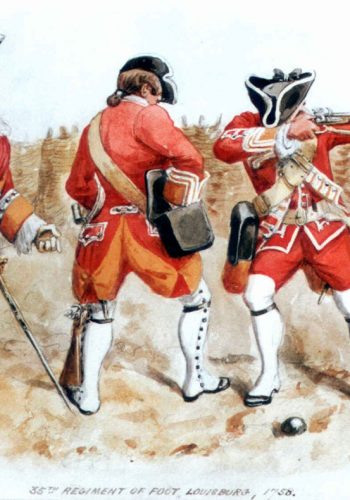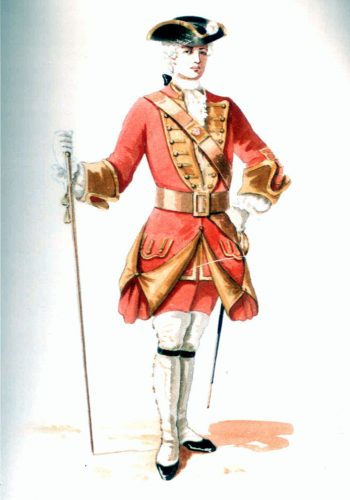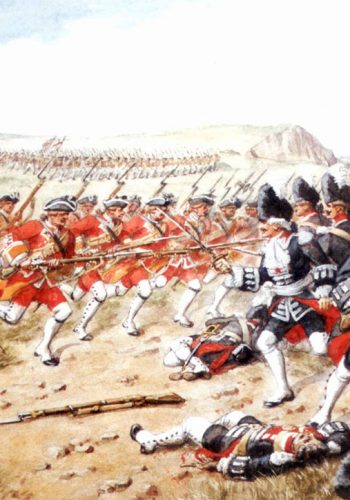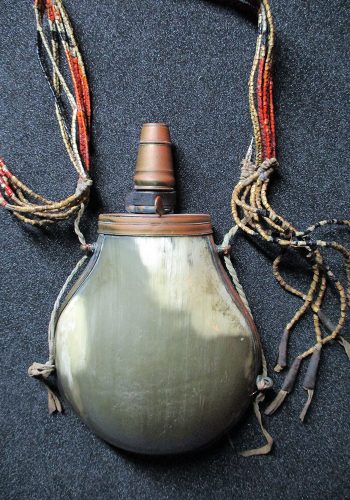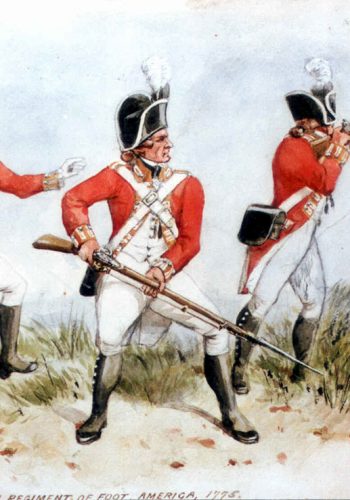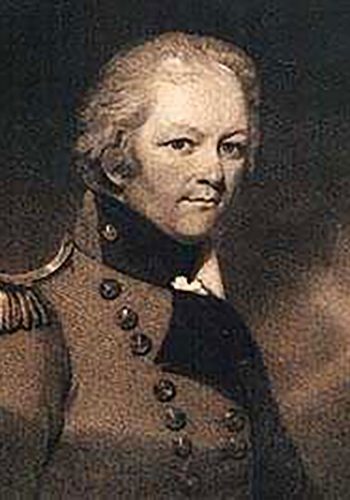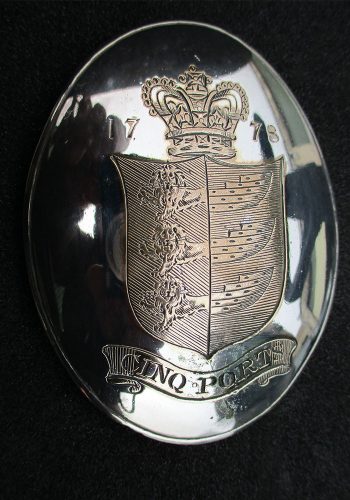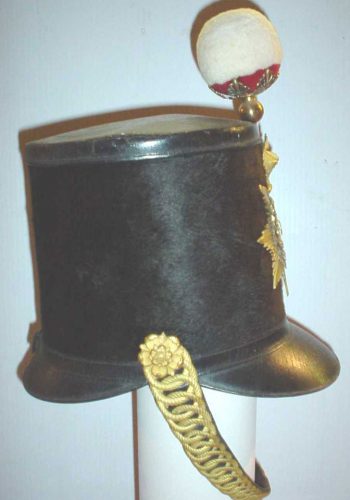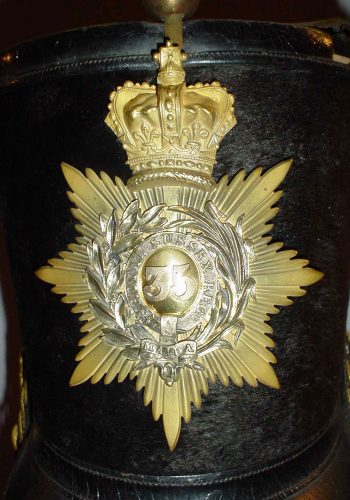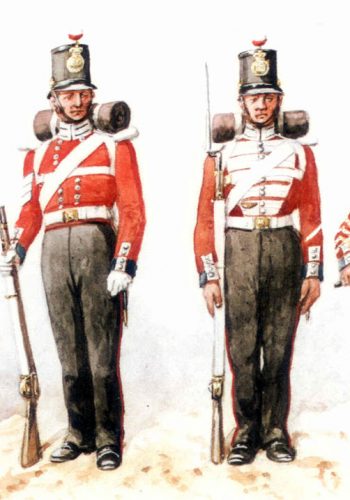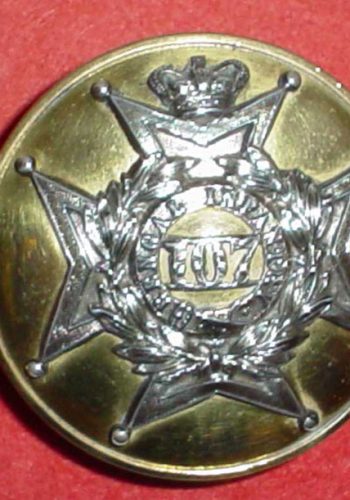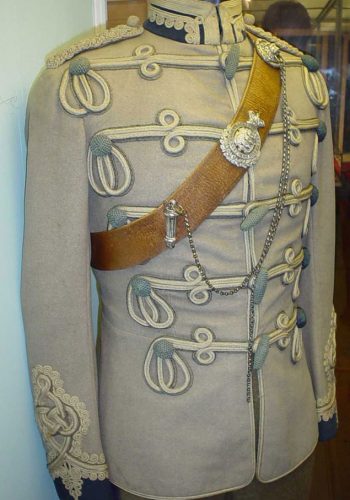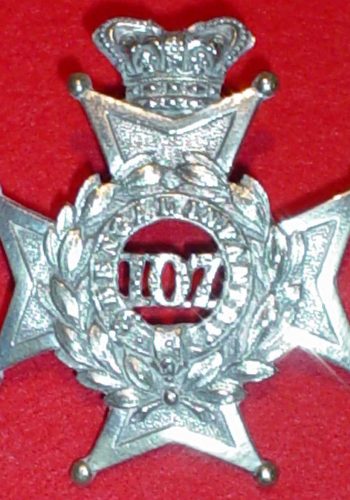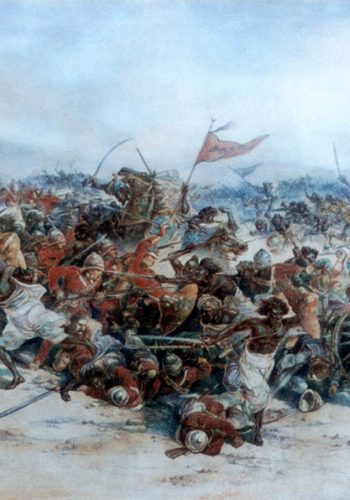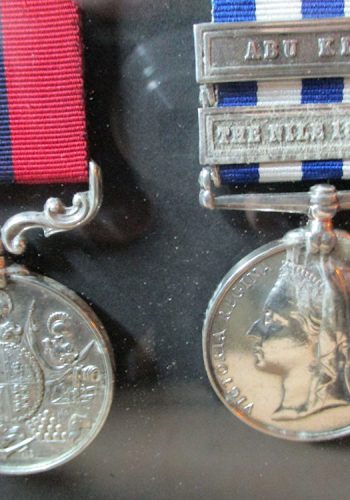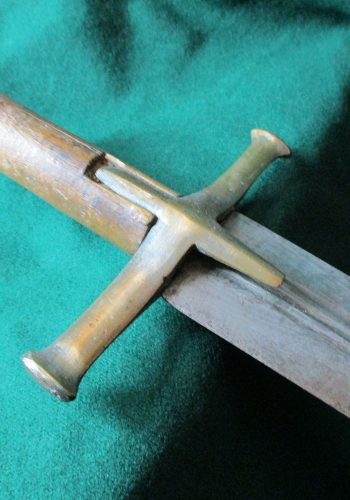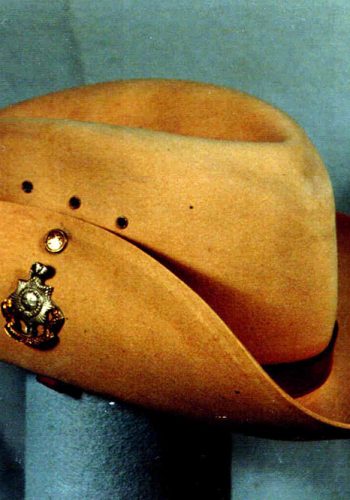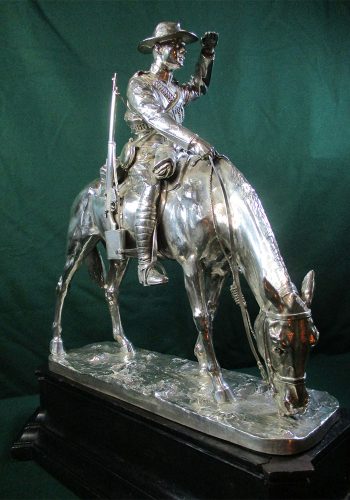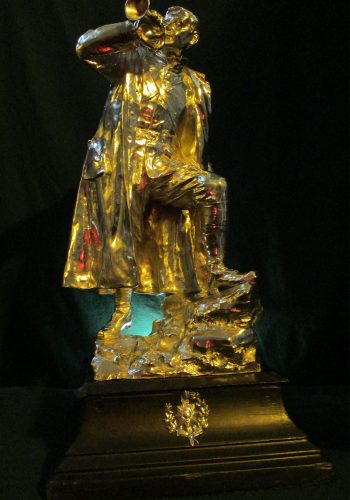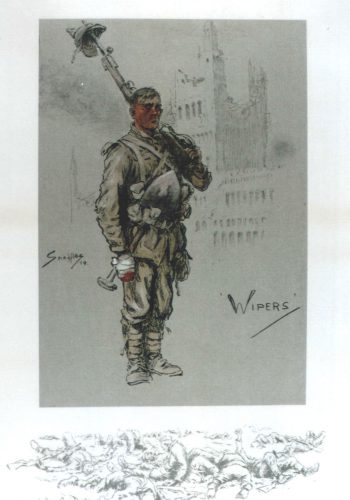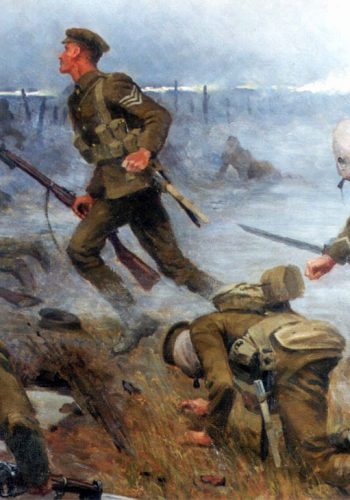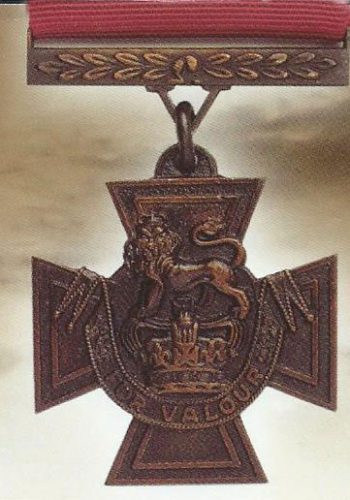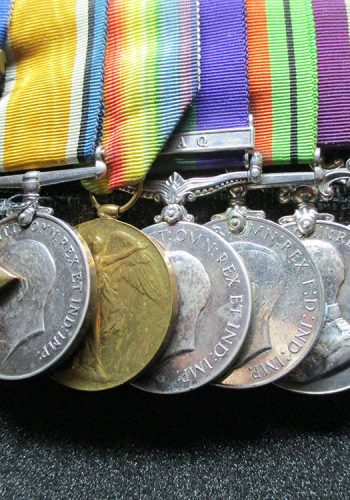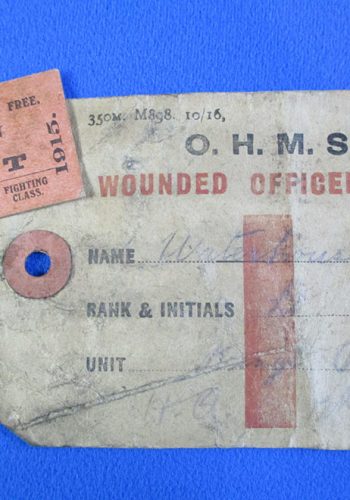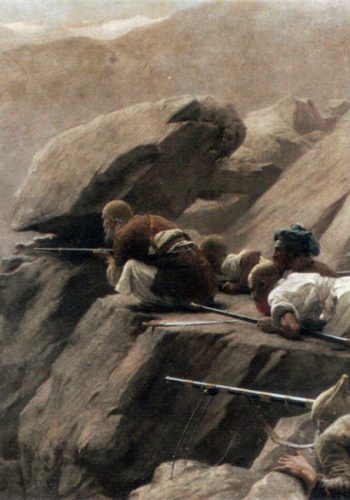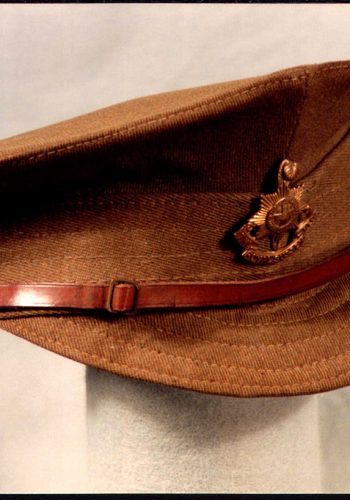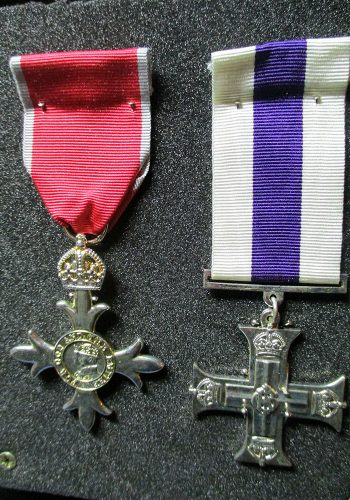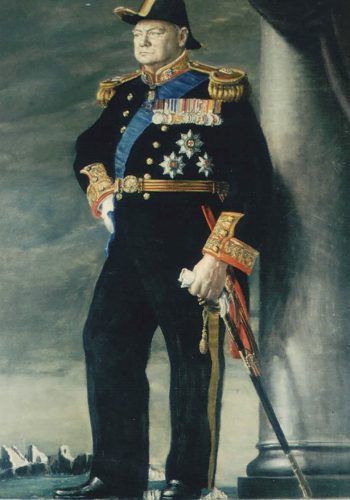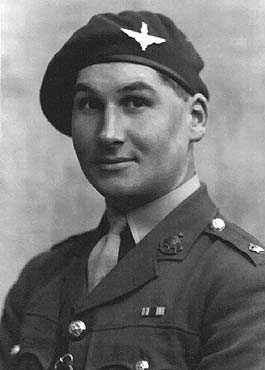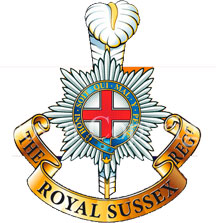The Royal Sussex Regiment Online Museum
The Regimental Collection is one of the most extensive in the country and consists of over 8,000 artefacts from across the spectrum of the Regiment’s long and illustrious history. Therefore, this website is a perfect alternative as a virtual museum, so that members of the public or researchers can see selected artefacts in a chronological order from the Collection. You will see that each image is listed with its collection reference number (see image alongside i.e. CHCRS:2451). Owing to the large number of artefacts we will be uploading imagery and supporting text in date order commencing here with the regiment’s formative years. If there is a specific period, or item of interest, that is not currently displayed please email your request via the contact page of this website.
The museum team also carry out outreach programmes by appointment for organisations such as schools, cadet detachments, Rotary and Round Table clubs, and historical, family and veteran’s societies. These include a presentation on an aspect of our regimental history accompanied by a display of artefacts from the museum collection. Please use the contact page for further information.
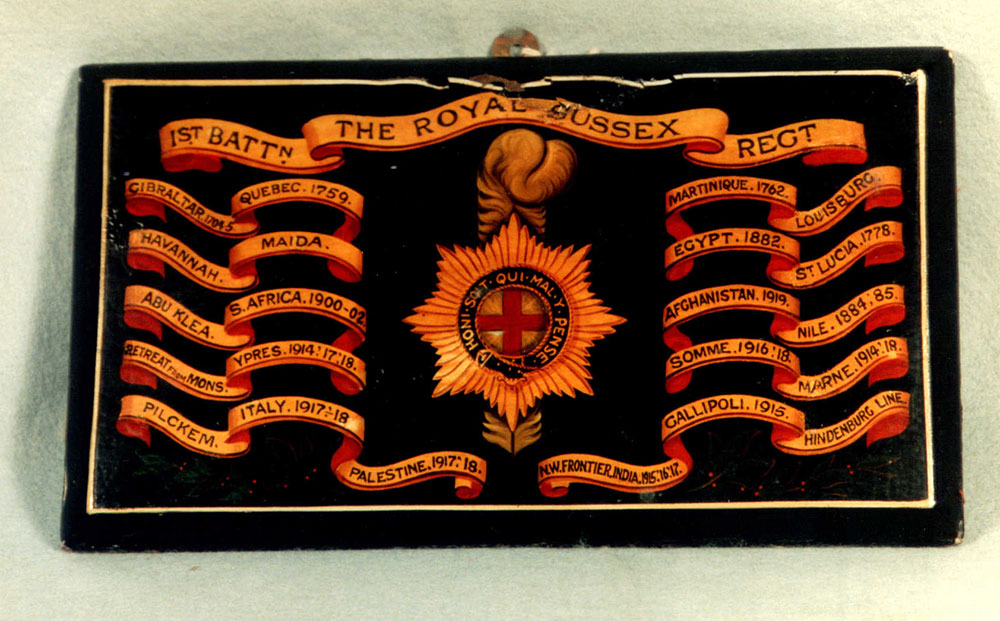
CHCRS:2451 Drum Board of the 1st Battalion 138 x 241mm 1919 with 22 battle honours
The Early Years, The War of the Spanish Succession 1702 – 1713
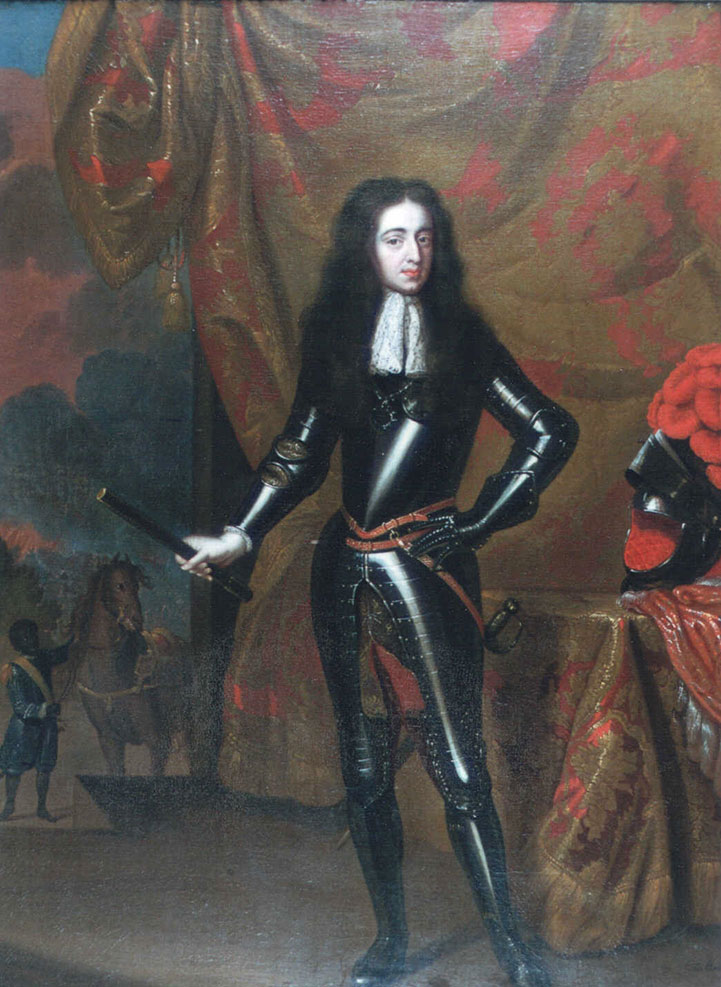
CHSRS:1471 – Oil painting of William III (William of Orange)
King Louis XIV of France’s ambitions had not been curbed by the Treaty of Ryswick and claimed the vacant throne of Spain for his grandson Philip, the Duke of Anjou. Shortly before he died, William III had created the Grand Alliance of England, Netherlands and the Holy Roman Empire (Austria) against France and on 4 May 1702, Queen Anne who had succeeded William declares war on France.
A month later the Earl of Donegall’s Regiment was warned for sea service, not as marines but as a seaborne force for combined operations, and took part in several raids on the Spanish coast including Cadiz. It was during this period that the custom of drinking the Loyal Toast whilst sitting, referred to on the Regimental history page, was introduced. In 1704 the Regiment reinforced Villier’s Marines (later the 31st Foot) at the siege of Gibraltar, together repulsing a besieging force of 12,000 French and Spaniards and gaining the Regiment’s first Battle Honour. When the siege was lifted the Regiment was transferred to Lord Galway’s force operating in Spain itself, and at the siege of Barcelona the Regiment lost its gallant Colonel whilst repulsing a third attempt to storm the outlying Fort Montjuich. Brigadier General Richard Gorges replaced The Earl as Colonel.
In 1707, a small force under Lord Galway, including the Regiment, attacked a Franco-Spanish force over 25,000 strong at Almanza. The Regiment was virtually wiped out and the remnants were withdrawn and returned to Ireland to reconstitute. Marlborough’s brilliant victories elsewhere in Europe forced Louis XIV to negotiate, and the war ended in 1713 with the signing of The Treaty of Utrecht, with Spain ceding Gibraltar in perpetuity to the UK. Gorges, now a Major General, ceased to be Colonel of the Regiment in 1717 and was replaced by Colonel Charles James Otway, who was to become the Regiment’s longest serving Colonel.
Click on the thumbnails below to show full size images.
The Seven Years War 1756 -1763
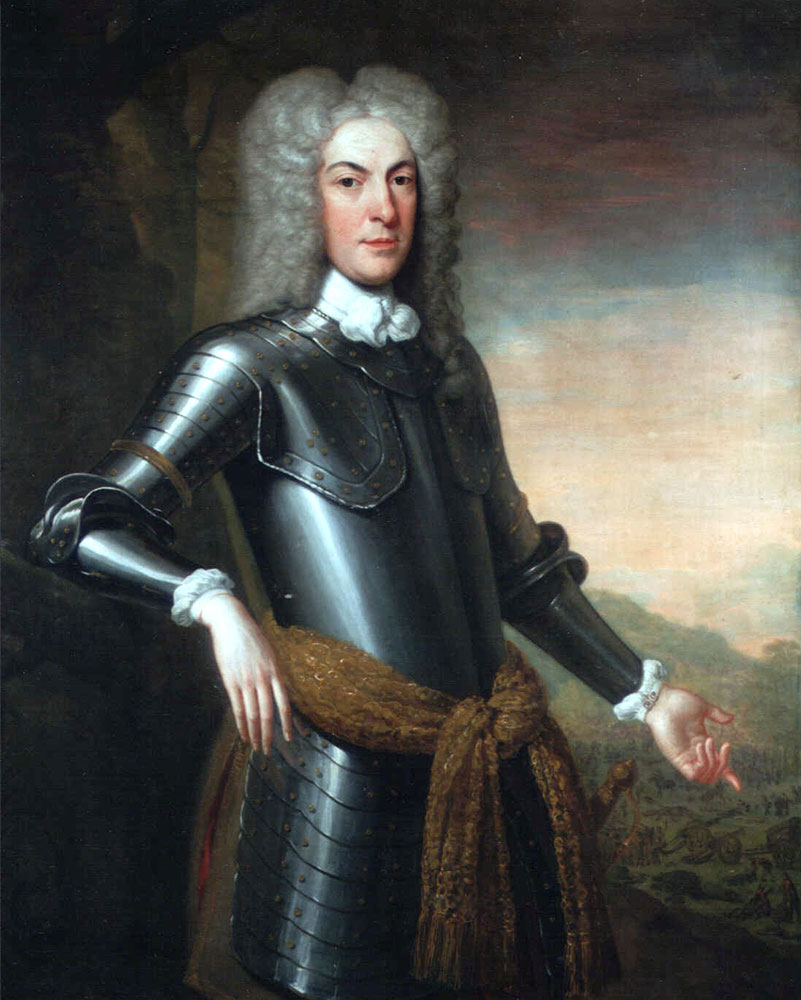
CHCRS:1466 Oil painting of General Charles Otway 1724. The Regiment’s longest serving Colonel
This was the first global conflict in a struggle for colonial supremacy between Britain and France and involved not only Europe and the Mediterranean, but also the Indian sub-continent, Canada, America and the Caribbean. In 1756 the Regiment, now re-numbered as the 35th Foot, embarked from Plymouth for service in North America, disembarking at Boston.
From there they were sent to Fort William Henry in the Hudson valley. Here, along with a large contingent of American Militia, under command of Lt Col. Monroe, they took part in the desperate defence against the French forces under General Montcalm and their Indian allies, attempting to sever British lines of communication as they advanced into French Canada. This action and the betrayal of the French forces after the surrender was made famous in the film ‘The last of the Mohicans’. On arrival at Fort Edward, 15 miles away, the survivors were reformed with Col. Monroe dying three month later, some said of a broken heart. The reconstituted Regiment was then posted to the force under Maj. Gen, Amherst who reduced the fortress of Louisbourg, which guarded the entrance to the St. Lawrence River and opened the way to Quebec, capital of French Canada.
In 1759, the 35th under General Wolfe played a key role in the final battle against the French in Canada at the Battle of Quebec, where they defeated the Royal Roussillon Regiment, bringing the campaign to an end. The 35th still had two short but exacting campaigns to fight before the Seven Years War was brought to a successful conclusion. Both of these were in the Caribbean where they helped storm Martinique and Havana.
Click on the thumbnails below to show full sized images.
American War of Independence and County Titles
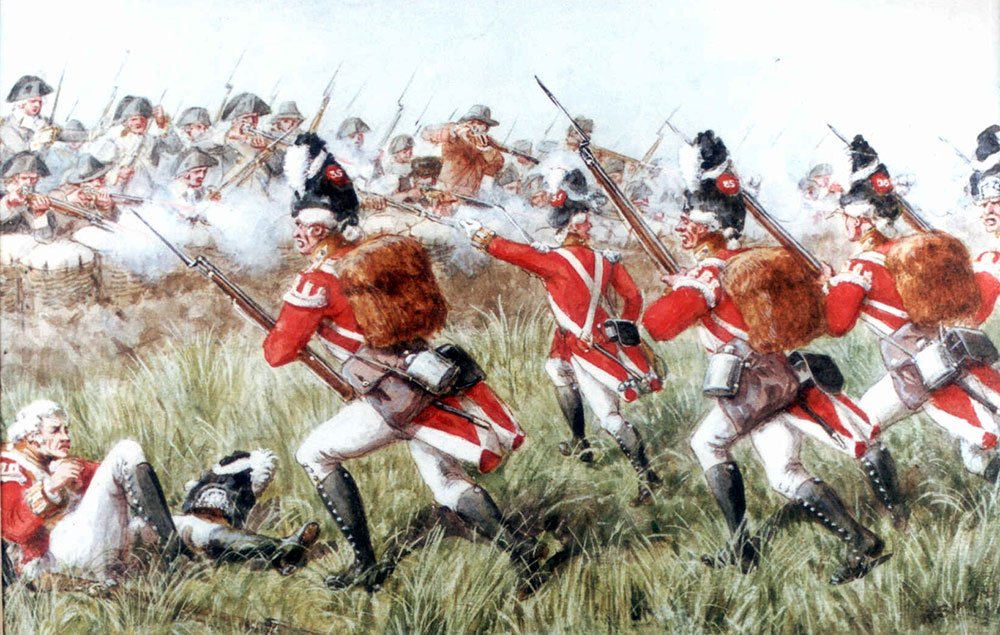
CHCRS:0124 Watercolour of assault on Bunkers Hill by Richard Simkin
At the start of the insurrection in the American colonies in 1775, the 35th embarked for Boston, only to find their old comrades in arms from Fort William Henry, 9,000 strong and on the opposing side. The Regiment left Boston in June 1775, to drive off the rebels who were entrenched on the dominating heights at Bunkers Hill outside the town.
They defeated the rebels again at Brooklyn a year later, captured New York in September, won the battle of White Plains in October and remained in New York until the end of the year, whence it sailed for Barbados and having defeated the rebels in every engagement they were not therefore, to suffer the humiliation of the surrender of Cornwallis at Yorktown. In the final year of the war, county titles were approved and the 35th became the Devonshire Regiment. However, this was short lived and on becoming Colonel of the Regiment in 1803, Maj. General Charles Lennox, the 4th Duke of Richmond, had them renamed the Sussex Regiment, as his Goodwood Estate was in Sussex.
Click on the thumbnails below to show full sized images.
French Revolutionary & Napoleonic Wars
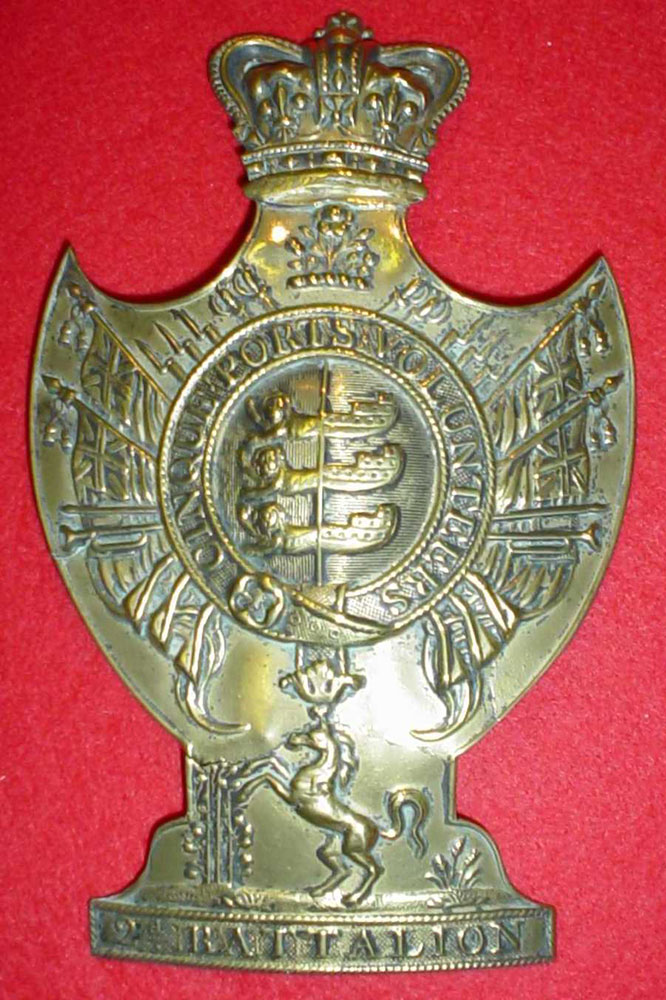
CHCRS 0035 Cinque Ports Rifle Volunteers Shako Plate
In 1800 during the French revolutionary War, the 35th Foot, now two Battalions strong, recovered Malta from the French, who had seized it from the Knights of St. John of Jerusalem. The first British flag raised on the ramparts of Valetta was the King’s Colour of the 35th Foot, (at midnight on 20/21 September 1964, Lt. S. Thorpe, 1st Battalion The Royal Sussex Regiment, lowered the Union Flag on the occasion of the moment of independence for Malta). The flag is now in the Regimental collection.
One of the conditions of the Treaty of Amiens of 1802, which ended the conflict, was the restoration of the Island of Malta to the Knights of St. John. 14 months later, Napoleon again declared war on the trumped up charge that this condition had not been met. Napoleon had already occupied the Papal States, declared himself King of Italy, and sent a powerful force under his brother against Naples and the Kingdom of the Two Sicilies. The 1st Battalion was sent to help defend Sicily, and in the summer of 1806 the Grenadier and Light Companies were part of a force sent to Calabria under Sir John Stuart to halt the French advance. On 2nd July, having consolidated their beach head, the British advanced to meet the superior French force formed up on the heights above the small village of Maida. The French tried to turn the British right flank, but the volleys were so furious that the French broke as the British advanced with the bayonet, and the withdrawal became a general rout. This battle is important as it marked the first time that Napoleon’s army had been defeated on land.
The Regiment was not involved in the Peninsular campaign, but in July 1815 the 2nd Battalion, which by now had been posted back to Belgium, formed part of the right flank of the Duke of Wellington’s army at the battle of Waterloo. There are ten Waterloo medals in the collection.
Napoleon to Indian Mutiny
Cardwell Reforms
Edward Cardwell, Liberal Secretary of State for War, introduced major reforms dealing with enlistment, abolition of purchasing commissions and promotions. In 1872 he linked battalions in a regiment to ensure regular exchanges between home and overseas postings, and gave each regiment a county affiliation with a training depot in its respective county.
The 35th amalgamated with the 107th Foot to form two battalions of The Royal Sussex Regiment, as they already shared a depot at Chichester (by happy coincidence, the family name of the Earl of Donegall, who raised the 35th Foot). The 107th was originally the 3rd Regiment of Bengal European Infantry which had been raised by the East India Company in 1853 and transferred to the British Army, as the 107th, after the Indian Mutiny.
Sudan Campaign 1883-1885
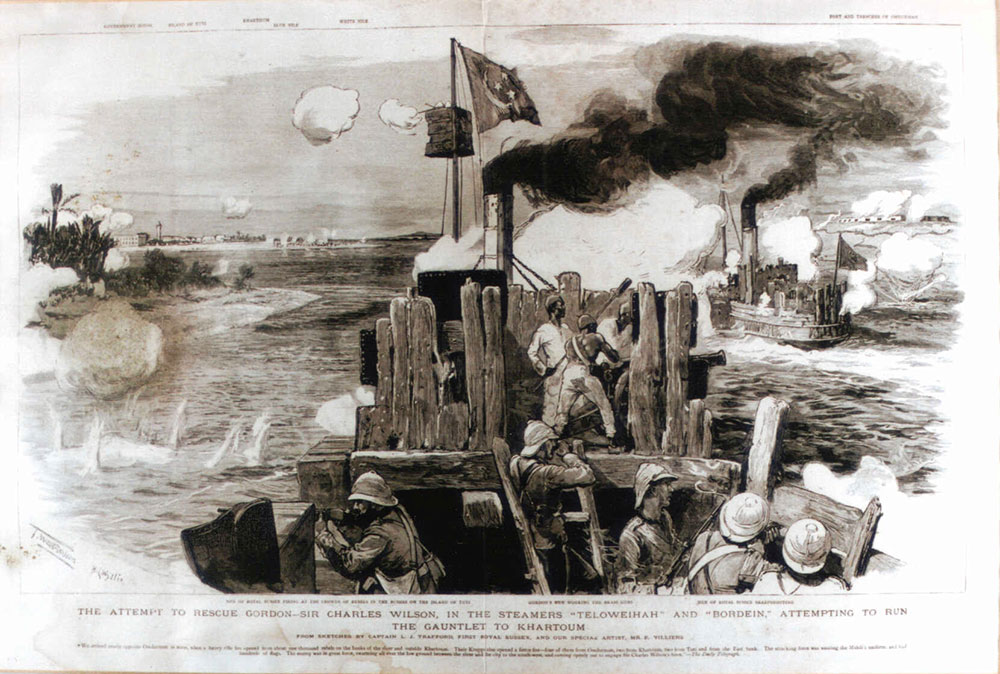
CHCRS 0807 Litho Print Of Steamers Running The Gauntlet Into Khartoum
The Royal Sussex Regiment were part of the expedition under Lord Wolseley, despatched by the government in 1884, to relieve General Gordon who had been cut off in Khartoum. Progress along the River Nile was so slow that by the time they reached Korti, where on the 13th November they received a letter from Gordon dated the 4th November, that he could only hold out until 14th December.
Therefore a camel column including four companies of The Royal Sussex were despatched across the desert to Metemmeh. As the column approached the wells of Abu Klea they were attacked by a large force of Dervish tribesmen. They rapidly formed square but the enemy broke into the rear corner. As they were on an incline the front face about turned and fired over the heads of the rear face, halting any further advance into the square. Major Sutherland and two of his companies, counter attacked those that had broken in and in a desperate melee wiped out the invaders, thus restoring the integrity of the square. The little force of 1,500 men had by sheer guts repulsed a far superior force with over 1,100 dead being counted in the proximity of the square. On arrival at Metemmeh, two steamers, the Bordein and the Talahawiya, with an officer and 20 NCO’s and men onboard, were despatched in a final desperate attempt to rescue Gordon.
Boer War 1899 -1902
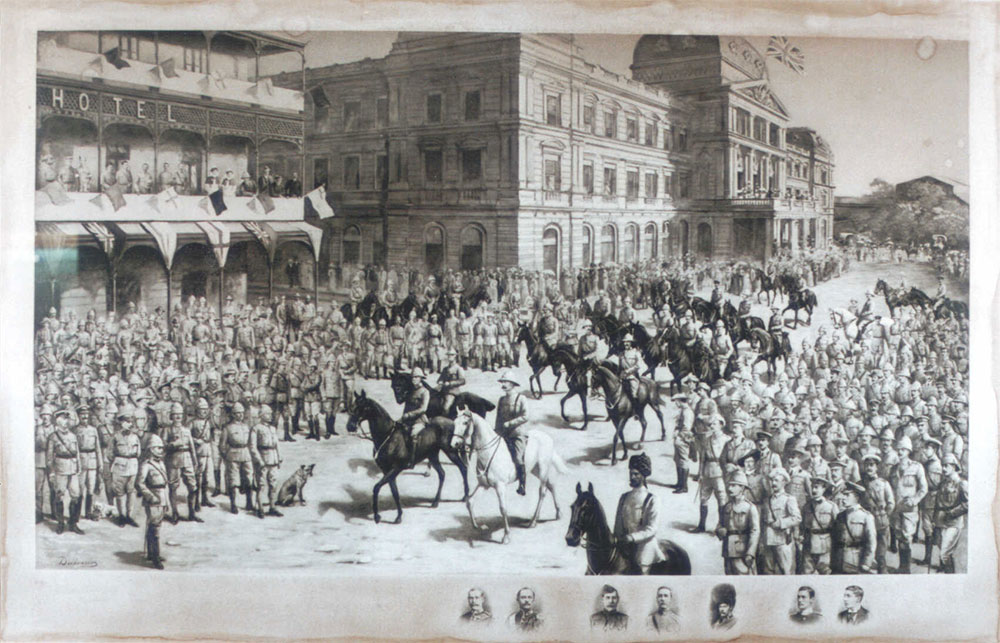
CHCRS 1264 Lithograph Of Lord Roberts March Into Pretoria 1900
It was February 1900 when the liner Pavonia steamed into Cape Town with the 1st Battalion on board, having departed Malta six weeks earlier. The Battalion was sent up to join Lord Robert’ Army at Bloemfontein for the advance on Pretoria.
After having marched over 100 miles they first saw action at Zand River and forced the Boers to retreat. The advance continued in constant touch with the Boer rearguards towards Johannesburg and in a flanking move engaged the enemy at Doornkop, where in a spirited assault took the enemy position. Having captured Johannesburg it was onto Pretoria which fell on 15 June. Two more heavy engagements took place at Diamond Hill and Retief’s Nek before the first phase of the war came to an end. The Boer’s however, continued the struggle with their mobile commandos carrying out guerrilla warfare before finally being ground into submission in 1902.
This war also saw the first use of the reserves serving overseas in support of their regular comrades. A Volunteer company had been formed from across the units within Sussex and they served with honour alongside the 1st Battalion as mounted infantry hunting down Boer Commandos.
World War One 1914 - 1918
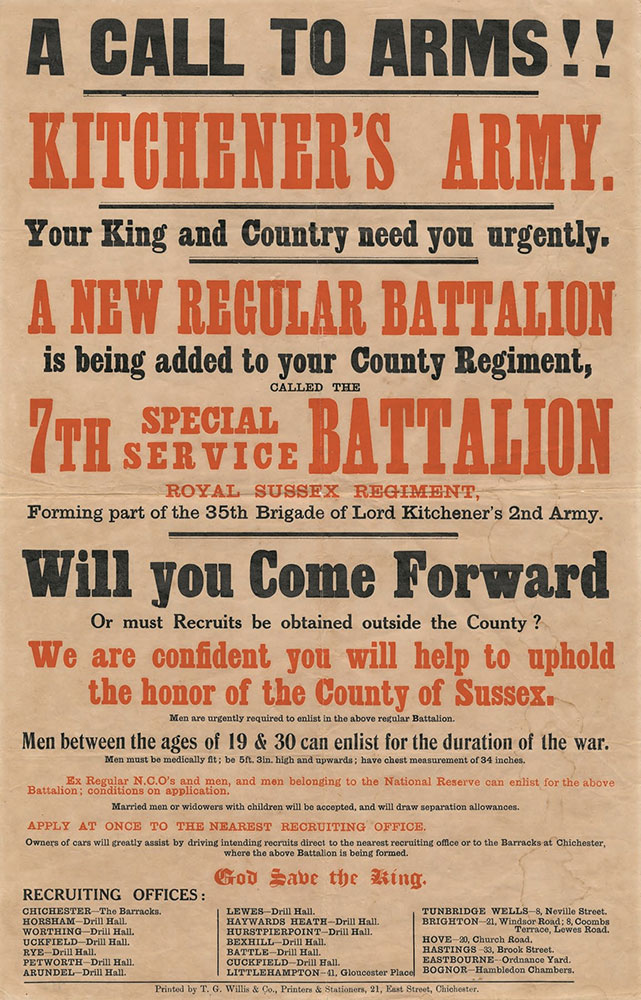
Recruiting Poster For The 7th Battalion, Held At West Sussex Records Office
The Boer War had revealed shortcomings in the Army’s organisation as it was shown that the original force sent out was far too small and when this was realised the machinery for expanding it proved ineffective. Luckily, cometh the hour cometh the man, Lord Haldane who was appointed Minister for War after the conflict, totally re-organised the army. Firstly, and within limited budget constraints, he built a General Staff along German lines, then created a British Expeditionary Force for service overseas. Thirdly he reorganised the Militia to become the training depot to feed reinforcements, and lastly he turned the Volunteer Force into the Territorial Force as an immediate reserve for the BEF.
After the glorious summer of 1914, the declaration of war on Germany and the Central Powers took most people by surprise. Sadly Great Britain was totally unprepared for continental war, both economically and militarily, having over the last thirty years spent most of the defence budget in a ‘Dreadnought’ race with the German Navy, leaving precious little in the budget for the army. On the outbreak of war one of Haldane’s military advisers, General Haig, recommended that as this was going to be a long war one third of the BEF should be kept back to train the citizen army that was going to be required. Sadly Haldane had been replaced by Kitchener on the day war was declared and this advice was ignored. Although Kitchener put out his ‘call to arms’, he ignored the organisation put in place by Haldane and used local worthies to raise his ‘New Army’. Consequently they had no camps, uniforms, weapons or more importantly anyone to train them properly. This decision was to have terrible consequences on 1st July 1916.
However, the survivors of the Somme went on to become the cadre for the victorious army of 1918. It took the country three long years of sacrifice to eventually be put on a total war footing, and by 1918 the army finally had the resources to not only absorb the German spring offensive, but drive it out of northern France, and defeat what was until then the finest army in the world. The new civilian German government, now facing the almost certain annihilation of its army, desperately pleaded for an armistice based on US President Wilson’s 14 points. This was granted on 11th November 1918 and hostilities ceased at the 11th hour on the 11th month in what must be considered ‘Britain’s Finest Hour’.
Field Marshal Haig ‘s strategy had proved to be the correct one and he and his Army Commanders had won the greatest victory in British history .His achievement must place him in the pantheon of Great British Generals, alongside Marlborough and Wellington.
Second World War 1939 - 1945
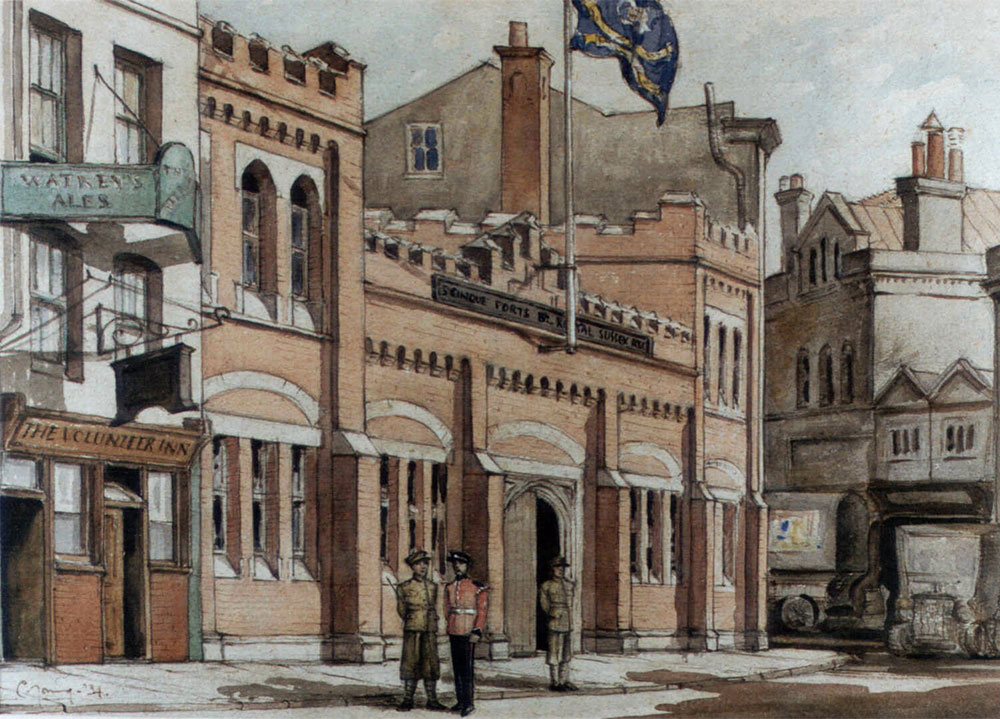
CHCRS 1066 Watercolour Of Middle Street Drill Hall In Hastings, HQ Of The 5th (Cinque Ports)
The failure of the Versailles Treaty to address the vacuum created by the disappearance four empires, created the conditions for further conflict twenty years later. The intervening years had seen the armed forces totally neglected along with foreign policy.
When re-armament did finally come in 1937, once again, the army was the poor relation for funding, with the other two services receiving the lions share of the budget. The government only introduced conscription 6 months before the outbreak of hostilities, therefore the army started the war in a far worse shape than it was in 1914, in equipment, training and more importantly it lacked a ‘war fighting doctrine’. The war started badly as they lost all their equipment at Dunkirk and they never really caught up in any field, only producing a good tank in 1945 and even that late, their leaders were debating the pro’s and con’s between infantry and cruiser tanks . The only British General that applied a proper war fighting doctrine and imbued it into the men under his command was General Slim who’s style of command equated to what today is termed Mission Command.
The Regiment was represented in all theatres of war during the conflict, with the 1st Battalion serving with the 4th Indian Division in Eritrea, the Western Desert, Tunisia, Italy and Greece. The 2nd,4th and 5th Battalions were brigaded together in 44th Home Counties Division, first with the BEF in France in 1940. They joined the 1st Battalion in the 8th Army at the Battle of El Alamein. Not many regiments had four battalions represented. The 6th and 7th Battalions went to France in 1940, as line of communication troops and were badly mauled during the German breakthrough to the sea, with the survivors being evacuated back to the UK via Le Havre and St Nazaire. On return the 6th was broken up and the 7th rebadged as LAA RA. The 8th was a beach defence Battalion and the 10th was also a holding unit. The 9th Battalion served with distinction in Burma at the Second Battle of Arakan and at Pinwe. A 70th Battalion was raised and based in Crowborough consisting of young soldiers.
The last twenty years
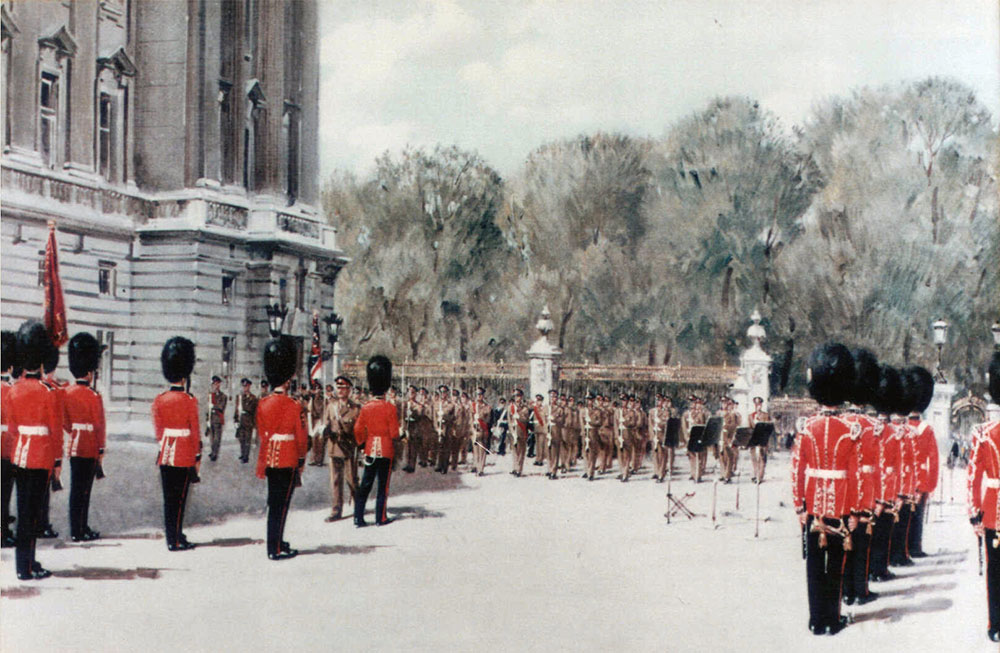
CHCRS 1002 Painting Of 1st Battalion Mounting Guard At Buckingham Palace 1963 By Terence Cuneo
The last twenty years of the Regiment was a mixed bag with misgivings over the introduction of the Group System in 1946, where primary recruit training was done at the depot in Chichester, but advanced training was completed at the Group Centre in Shornecliffe, a harbinger of things to come.
In 1948 amalgamations took place and the colours of the 2nd Battalion were handed over to the 1st and the 4th’s over to the 5th, thus reducing the Regiment to a single regular and Territorial Battalion. 1953 brought the 1st Battalion to the Suez Canal Zone, dealing with some tricky situations with an increasingly fractious population and in 1957 they became the last British Battalion to do a tour of duty in the Republic of Korea, where they were attached to the US 21st Regiment. The last operational tour for the Regiment was to the Radfan in Aden in 1966 as the British withdrawal from east of Suez got under way. They were in Lemgo in West Germany when the Regiment amalgamated in December 1966, with the other Regiment’s of the Home Counties Brigade into The Queen’s Regiment to become their 3rd Battalion.

